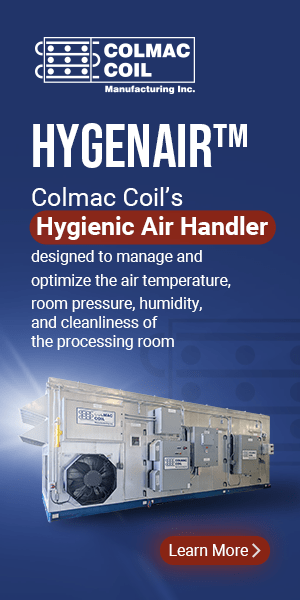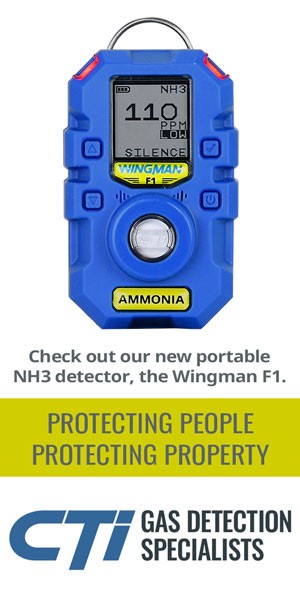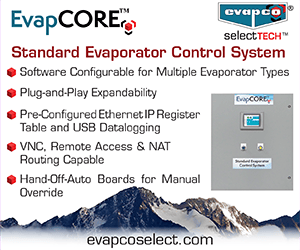From Threat Assessment to Employee Engagement: IIAR Tech Papers Unveil Research, Analyze Data
The meeting is scheduled for March 18-21 in Colorado Springs, Colorado. Martin Timm, a process safety manager at Praxair, Inc., will discuss how bow-tie graphics can be used to summarize findings in process hazard analysis studies, as well as for refresher training on hazards and barriers.
Timm’s presentation explains that the term “bow tie” refers to the graphical appearance of a diagram in which a “top event” is arranged in the center of a graphic, with a “fault tree” feeding in from the left and an “event tree” spreading to the right.
“A process hazard analysis is often quite lengthy,” Timm says. “The bow tie graphic is a nice way of showing key information in a concise fashion.”
Bow-tie diagrams can be used to explain to workers how unwanted scenarios develop, and how they can be prevented, or the consequences mitigated. “For example, one of the consequences of an ammonia leak is it could lead to a fire, and one of the barriers to that could be adequate ventilation, which would prevent ammonia concentration from rising to the lower flammable limit,” Timm says.
A technical paper providing an energy and function analysis of hot-gas defrost in ammonia refrigeration systems will be presented by Niels Vestergaard and Morten Skovrup, global industrial refrigeration applications experts at Danfoss.
The Vestergaard- Skovrup paper will discuss results from a research project that assessed energy savings potential in ammonia refrigeration systems with the focus on hot-gas defrost and minimum condensing pressure. For the project, an industrial refrigeration system was built at the Danish Technological Institute; it consisted of a pump-circulation ammonia system and a climate chamber, and equipment to measure data and to analyze frost efficiency.
The project studied how hot gas pressure affects defrost time and efficiency and determined the lowest required pressure; the difference in savings when using the liquid drain method vs. pressure control; and how the defrost duration affected the savings potential.
“Based on this project, it has become possible to conduct detailed operation and energy analysis and propose design requirements for safe, efficient and reliable defrost systems,” Vestergaard says.
Dr. Faris Hussain, a teaching associate in the food-science department at Kansas State University, will explore the benefit of scrubbing ammonia with CO2 following a release to decontaminate food products. “This is a very effective way to do it,” he says. “By scrubbing with CO2, you neutralize the ammonia, so you can’t smell or taste it, and the product is fine.”
The process involves locking down and sealing the facility, spraying with CO2 gas and waiting 12 to 24 hours.
“The CO2 is inexpensive, and you could save the product,” he says. “In case of an insurance claim against the product instead, you could win in court and the product might stay in your facility.”
Stephanie Smith, a senior engineer at Risk Management Professionals, will present a workshop on how California’s ARP Program 4 and Occupational Safety and Health Administration regulation 5189.1 could ultimately affect the ammonia refrigeration industry across the country.
A paper from Craig Slininger, operating engineer at Nestle, will explore ways to develop relationships with local first responders that can be beneficial in the event of an ammonia incident. Slininger will cite a recent situation in which a fire marshal took possession of a facility for three days, shutting down production and costing the company millions of dollars. “You don’t ever want to be sitting on the bench when the future of your facility is on the line,”
Slininger says. “You want to maintain control over your facility. For that to happen, you need to develop a relationship so first responders have absolute confidence that you’re not just saying something for monetary reasons.” Slininger will recommend steps that create a bond with first responders. “Invite them to your facility several times, not just once a year for required drills,” he says. “Know their names, titles and positions. Create a relationship where they come not because they are obligated, but because they want to.”
The paper will explore steps to consider prior to an emergency incident, such as informal tours of the facility that build trust with first responders. “You don’t want to give up a say in the process. As long as you’re on the team, you’re still the subject matter expert for what’s going on,” he says.
Meanwhile, two more technical papers will focus on practical design. One will examine stainless steel piping while another delivers a case study on low charge systems.
Karthick Kuppasamy, a refrigeration design engineer for Heatcraft Worldwide Refrigeration, will present a case study focused on ultra-low charge ammonia refrigeration in food retail. The session will describe the design, installation, commissioning, and certification of energy savings for a me-dium size supermarket in southeastern USA.
Eric Teale, director, refrigeration engineer at Corval Group, Inc. will present a technical paper fo-cused on stainless steel piping in industrial refrigeration. The session will provide an in-depth examination of stainless steel: the history of stainless steels, properties of stainless steel, corrosion of stainless steel, welding of stainless steel, and QA/QC issues associated with the installation pro-cess of stainless steel.













